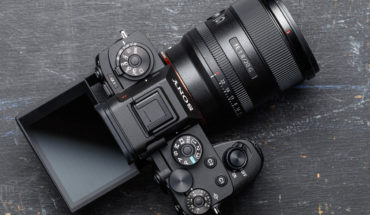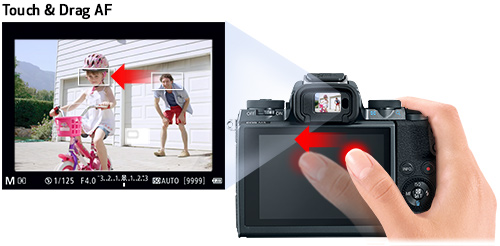
Sony A1 Camera
The Sony A1 is the company’s flagship interchangeable lens camera, with a 50MP sensor that can capture bursts of images at 30 frames per second and records 8K video. That sensor also helps power the a1’s capable autofocus system, which comes with updated machine learning derived algorithms for detecting human faces and eyes, as well as the eyes of many types of animals and birds.
Sony is billing the Alpha 1 as, well, the one camera that can do just about anything you’d need it to do, whether you’re shooting fast action, landscapes, or high-end video. It’s also in a reasonably sized body, so wouldn’t be out of place for use in reportage or travel photography, and its Ethernet and high-speed USB-C ports speak to its ambitions as a pro-sports machine.

Sony A1 Front
Sony A1 Specifications:
- 50MP ‘stacked’ full-frame CMOS sensor
- 30 fps burst shooting with electronic shutter (lossy compressed Raw/JPEG only)
- 8K/30p video recording with Log and 4K Raw video out over HDMI
- 1/400 sec flash sync with mechanical shutter (1/200 sec with electronic shutter)
- 9.44M-dot OLED electronic viewfinder with 0.9x magnification
- 3.0″ tilting touchscreen with 1.44M-dot resolution
- Full-size HDMI port, headphone / mic ports, USB-C port with 10 Gb/s transfer speeds, ethernet port
- Dual UHS-II / CFexpress Type A card slots
- CIPA rated to 530 shots with rear LCD (430 through the viewfinder)
- Weather-sealed body
- 737g (1.62 lb)

Sony A1 Top
The A1’s new BIONZ XR processors deliver faster exposure and focus, running up to 120 calculations per second, and now supports animal eye detection for birds (stills only for animal AF, not video), as well as operating at apertures as small as f22.
In terms of video, the A1 will film uncropped 8k up to 30p, oversampled from 8.6k with no binning and encoded in XAVC HS / H.265 / 10-bit 4:2:0 at 200 or 400Mbit/s; thanks to the encoding you can record 8k onto an SD card and Sony is quoting at least 30 minute recording times. 4k is available up to 120p (with a 10% crop) in either XAVC HS 4:2:2 10-bit or XAVC S 8-bit at up to 200Mbit/s. All video is in the 16:9 aspect ratio, so still no DCI internal. If you film in the Super 35 format, the A1 will oversample 4k video from 5.8k with bit rates up to 600Mbit/s. S-Cinetone and Active Stabilisation (with a 1.1x crop) are available (as is post-stabilisation with Catalyst), and 16-bit RAW output is available over HDMI in 4.3k resolution, allowing DCI recording. The hotshoe supports the digital microphone accessory.

Sony A1 Back
The viewfinder shares the same 9.44 million dot OLED panel resolution of the A7S III, but with a faster 240fps refresh rate and a large 0.9x magnification. The screen is the same as the A7r IV, so tilts vertically rather than flipping to the side. It’s powered by the Z-series battery with Sony quoting 530 shots with the screen or 430 with the viewfinder; the VG-C4EM grip supports two batteries. Like the A7S III, there’s dual card slots, each supporting either SD or CF Type A cards. For connectivity there’s 802.11ac 2×2 MIMO at 2.4 or 5GHz, 10Gbps USB-C (v3.2), 1Gbit Ethernet LAN, PC Sync (mechanical shutter only), Micro USB, and 3.5mm mic and headphone jacks. The new Experia Pro 5G phone can be connected directly to the USB C port for direct tethering for mobile data and also be used as an external 4k HDMI monitor.
It all adds up to Sony’s most capable Alpha to date, albeit again its most expensive. In pro terms, the price isn’t unreasonable compared to, say a Canon 1Dx III or Nikon D5, but while there’s a lot of unique features on the A1, many of the headlines are roughly matched by the Canon EOS R5 at almost half the price.
I’ve begun testing a final production sample and have already put together a selection of sample images along with noise comparisons with the Canon EOS R5! Keep scrolling for my sample movies!.





